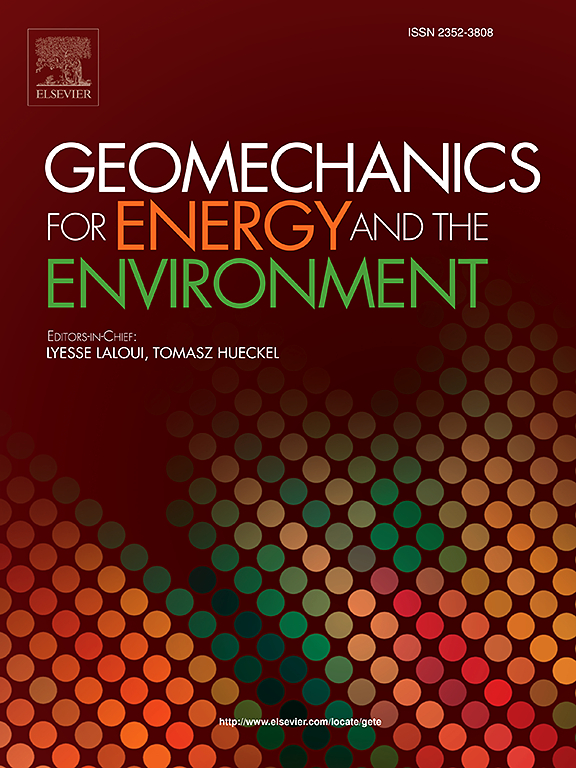A data-driven and machine learning-assisted interpretation of hydraulic fracturing experiments in various formations
IF 3.7
2区 工程技术
Q3 ENERGY & FUELS
引用次数: 0
Abstract
Hydraulic fracturing has evolved from enhancing oil and gas recovery to addressing challenges in groundwater hydraulics and geo-environmental engineering. This study consolidates data from 30 experimental studies, including both high-permeability formations (cohesionless sands and weakly cemented sandstones) and low-permeability formations (tight sandstones and shales). Machine learning (ML), specifically Random Forest models, is applied to identify the parameters influencing the fracture pressure. Key factors include the mean stress, stress differentials, rock properties, and fluid dynamics. The ML models demonstrate strong predictive performance, highlighting the critical role of stress states and flow conditions in the fracture mechanisms. In the case of weakly cemented rocks and cohesionless sands the stress state is by far the most influential parameter that determines the fracturing behaviour. The findings are contextualized using cavity expansion theory and conventional fracturing criteria, providing deeper insights into the fracture behaviour of the various unconventional rocks. The study identifies gaps in the literature, emphasizing the need for further experiments to refine predictive models. Recommendations for future research aim to improve experimental setups and parameter selection, enhancing the understanding of hydraulic fracturing in unconventional formations.
数据驱动和机器学习辅助解释不同地层的水力压裂实验
水力压裂已经从提高油气采收率发展到解决地下水水力学和地质环境工程方面的挑战。该研究整合了30项实验研究的数据,包括高渗透地层(无黏性砂岩和弱胶结砂岩)和低渗透地层(致密砂岩和页岩)。机器学习(ML),特别是随机森林模型,被用于识别影响破裂压力的参数。关键因素包括平均应力、应力差、岩石性质和流体动力学。ML模型显示出强大的预测性能,突出了应力状态和流动条件在破裂机制中的关键作用。在弱胶结岩石和无胶结砂的情况下,应力状态是迄今为止决定压裂行为的最具影响力的参数。利用空腔膨胀理论和常规压裂标准,对这些发现进行了背景分析,从而对各种非常规岩石的破裂行为有了更深入的了解。该研究指出了文献中的空白,强调需要进一步的实验来完善预测模型。对未来研究的建议旨在改进实验设置和参数选择,增强对非常规地层水力压裂的理解。
本文章由计算机程序翻译,如有差异,请以英文原文为准。
求助全文
约1分钟内获得全文
求助全文
来源期刊

Geomechanics for Energy and the Environment
Earth and Planetary Sciences-Geotechnical Engineering and Engineering Geology
CiteScore
5.90
自引率
11.80%
发文量
87
期刊介绍:
The aim of the Journal is to publish research results of the highest quality and of lasting importance on the subject of geomechanics, with the focus on applications to geological energy production and storage, and the interaction of soils and rocks with the natural and engineered environment. Special attention is given to concepts and developments of new energy geotechnologies that comprise intrinsic mechanisms protecting the environment against a potential engineering induced damage, hence warranting sustainable usage of energy resources.
The scope of the journal is broad, including fundamental concepts in geomechanics and mechanics of porous media, the experiments and analysis of novel phenomena and applications. Of special interest are issues resulting from coupling of particular physics, chemistry and biology of external forcings, as well as of pore fluid/gas and minerals to the solid mechanics of the medium skeleton and pore fluid mechanics. The multi-scale and inter-scale interactions between the phenomena and the behavior representations are also of particular interest. Contributions to general theoretical approach to these issues, but of potential reference to geomechanics in its context of energy and the environment are also most welcome.
 求助内容:
求助内容: 应助结果提醒方式:
应助结果提醒方式:


